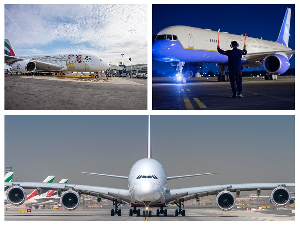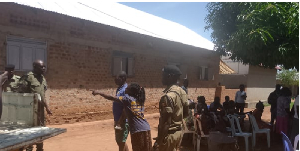- Home - News
- TWI News | TV
- Polls
- Year In Review
- News Archive
- Crime & Punishment
- Politics
- Regional
- Editorial
- Health
- Ghanaians Abroad
- Tabloid
- Africa
- Religion
- Election 2020
- Coronavirus
- News Videos | TV
- Photo Archives
- News Headlines
- Press Release
General News of Saturday, 2 December 2006
Source: Okyere Bonna
Avoiding Road Accidental deaths at Christmas
Ghanaians need to be constantly reminded that car accidents are not caused by witchcraft but negligence on the part of drivers and passenger. Observing the road safety tips may therefore be necessary
ROAD SAFETY TIPS
Drivers must look out for the following:
• Do not drink and drive.
• Wear your seat belt all the time.
• Unless you are using a child restraint children must be 12 years old if they are to sit in the front passenger seat.
• You must carry a warning triangle, spare light bulbs, flash light and a first aid box. Also recommended are spare fuses and a fan belt.
• You must carry a warning triangle, spare light bulbs, flash light and a first aid box. Also recommended are spare fuses and a fan belt.
• If you breakdown on a road you should pull over on the right (if possible), turn on your hazard warning lights, and put your red warning triangle behind your vehicle to warn other drivers.
• You are not allowed to cross a solid yellow centre line. Give warning of your approach by flashing your lights
• Motorcyclist must wear their helmets and use their headlamp at all times.
• When you ride a motorcycle you must have your headlights on at all times.
• Be aware that wildlife may cross your path, slow down and be extra vigilant at dusk and night time when plying the highways in remote areas or the countryside. • Beware of wet or dusty conditions, potential collision with cattle, horses or native wildlife; human fatigue and drowsiness while travelling on long straight roads and across vast distances
• In bad weather (you are required to) use your low beam headlights.
• Use your headlights from half an hour after sunset to half an hour before sunrise. Headlights should also be used under bridges and in tunnels.
• Only use fog lights in conditions of poor visibility. • Do not overtake school buses when they are at a stand-still and have their red lights flashing. Give priority to buses when leaving stops.
• Watch out for pedestrian crossings, marked on the road in zebra crossings (or painted white bands). If you come across a pedestrian attempting to cross here you must give way (even when the traffic light is green or yellow).
• When travelling into the countryside, be aware that you may encounter narrow country lanes with limited space. On some roads like this you will notice that there may barely be room for two cars to pass, often there are passing places along the way to pull into, to allow passing.
• Be aware that you may come across steep hills and mountainsides in some regions of the countryside (eg. Aburi in Akwapim and Mampong in Ashanti) and you may encounter incredibly steep roads.
• When driving up steep inclines, ensure you are in a low gear and take it steady.
• If you are driving in residential areas be aware that traffic 'calming zones' are usually in effect. This means pedestrians may use the entire street, and children may be allowed to play in the street, so proceed with extreme caution.
Traffic lights: When approaching traffic lights, green denotes ‘go’, but it is advisable to slow down and check for traffic before proceeding. If you are turning right at a green light the approaching traffic has right of way, wait for a clear road before proceeding. An amber traffic light means you must slow down and stop. A flashing green arrow means you may proceed in the direction that the arrow is pointing. A flashing red arrow on your left means you may turn in the direction of the arrow as long as the road is clear of other traffic. A continuous red or green arrow means you may proceed in the direction of the arrow with caution.
Roundabouts:
Always give way at roundabouts, vehicles on the roundabout and approaching it from the right have right of way, don’t proceed until there are no vehicles approaching from the right.










